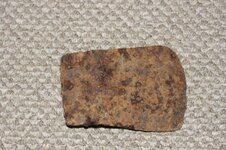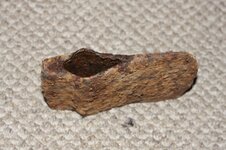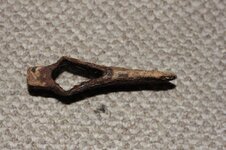smcdmc
Sr. Member
- Aug 12, 2011
- 301
- 71
- Detector(s) used
- Garrett GTAx 500, Teknetics G2, Garrett Pro Pointer
- Primary Interest:
- All Treasure Hunting
Any idea how to date this? The opening for the handle seems a little unique compared to most I have seen and the head flares a little like it was more of a splitting ax than for felling.






